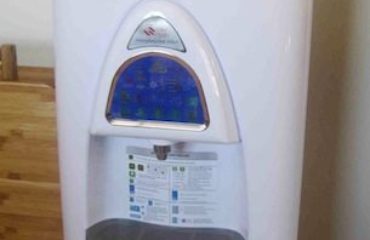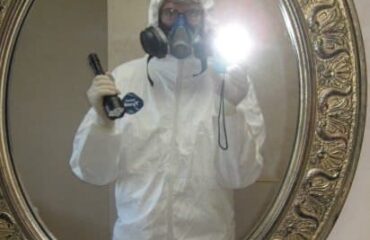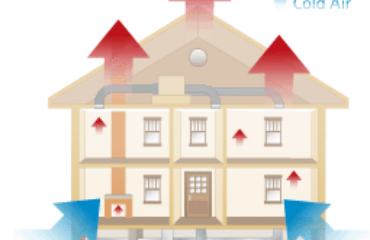Wildfire Smoke and Indoor Air Quality
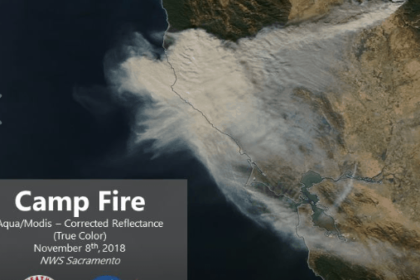
Bay Area Wildfire Smoke and Indoor Air Quality
I am writing this on November 13, 2018. For the past week the state of California has been cloaked in thick, noxious smoke from the wildfires burning out of control. Northern California is mostly affected by the Camp Fire near Chico, CA and Southern California by the Woolsey Fire. Many people are rightly concerned about the potential health affects of wildfire smoke. And while most think of smoke outside, there is also a concern about wildfire smoke and indoor air quality.
Even wearing a mask and running my indoor HEPA filter on turbo, I am suffering from respiratory distress and lower energy. It is indeed BAD out there!
I have seen and heard an avalanche of information on all the social media sites as well as traditional media. It is very confusing to sift through all this information and get to what’s true and helpful.
As an industrial hygienist and an air quality expert, I am going to try to distill the facts from the “fake news” and give you solid recommendations as to how best to protect your health and that of your loved ones.
From the U.S. Environmental Protection Agency site – AirNow.
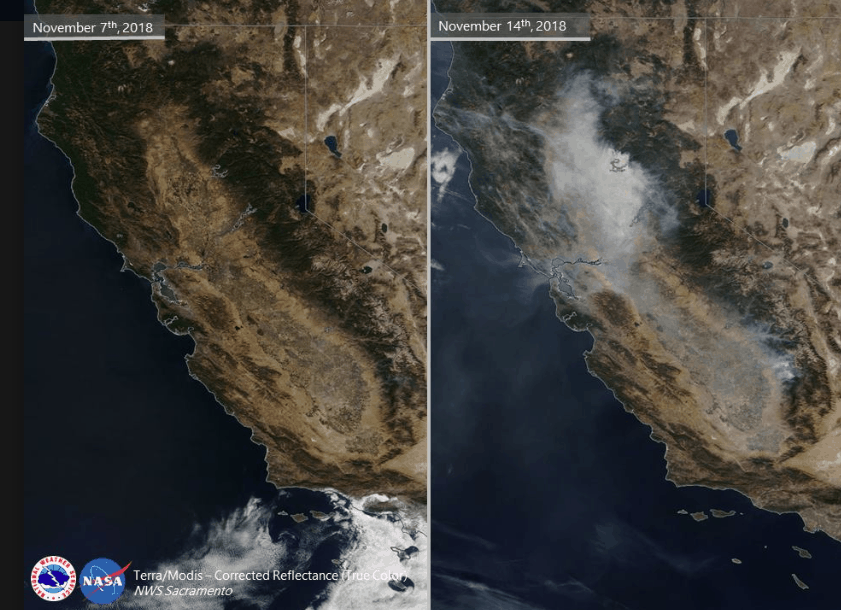
What is in wildfire smoke?
- Smoke is a complex mixture of carbon dioxide, water vapor, carbon monoxide, particles, hydrocarbons, other organic chemicals, nitrogen oxides, and trace minerals.
- Fine particles are the principal pollutant of concern from wildfire smoke for short-term exposures (hours to weeks).
What are some health effects of wildfire smoke?
- Fine particles can be inhaled deeply into the lungs; exposure to the smallest particles can affect the lungs and heart.
- Fine particles are respiratory irritants, and exposure to high concentrations can cause persistent cough, phlegm, wheezing, and difficulty breathing.
- Exposure to fine particles can affect healthy people, causing respiratory symptoms and reductions in lung function. Particle pollution may also affect the body’s ability to remove foreign material from the lungs, such as pollen and bacteria.
- Studies have found that short-term exposure (i.e., days to weeks) to fine particles, a major component of smoke, is linked with aggravation of pre-existing heart and lung disease.
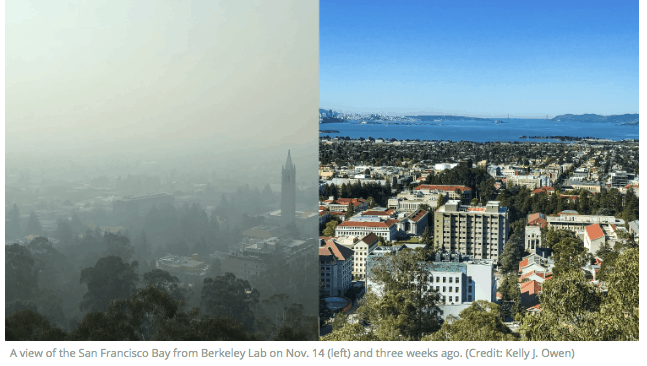
Where can I find info on my local Air Quality?
There are many websites that can give you info on local air quality. Here are the 3 sites I use:
airnow.gov – From the USEPA and local Air Quality Management Districts; this site has current conditions and forecasts. You can enter your zip code and zoom in.
Purple Air – Big data at its best; this site uses the internet of things. Purple air units are purchased and installed individually by customers at their homes and offices. The Purple Air units measure air quality at that location and the unit sends the info to Purple Air, which compiles all of the data and maps it for you. As there are thousands of units and thus thousands of data points you get a good overall picture.
Air Visual – This site is run by IQAir, which manufactures and sells portable filters and built in systems, including HEPA filters. I believe they get their info from the same sources as Airnow, but the map is good and easy to read.
Honorable Mention – BAAQMD – This is the website for the Bay Area Air Quality Management District. This is good if you live in the San Francisco Bay Area, but I find the site clunky and its info is also in the Airnow.com site, so I don’t really find the site too useful, but it does have some pertinent information.
For information on health effects and what to do about them, I refer to the California Department of Public Health Website.
How to Tell if Smoke is Affecting You
Smoke can cause:
- Coughing
- Scratchy throat
- Irritated sinuses
- Shortness of breath
- Chest pain
- Headaches
- Stinging eyes
- Runny nose
If you have heart disease, lung disease or a pre-existing respiratory condition, smoke might make your symptoms worse.
People who have heart disease might experience:
- Inability to breathe normally
- Cough with or without mucus
- Chest discomfort
- Wheezing and shortness of breath
Even healthy people may experience some of these symptoms in smoky conditions.
How to Improve the Air You Breathe Indoors
Following are ways to protect your health:
- Pay attention to local air quality reports. Listen and watch for news or health warnings about smoke.
- If you are advised to stay indoors, keep indoor air as clean as possible. Keep windows and doors closed unless it is extremely hot outside. Run an air conditioner if you have one, but keep the fresh air intake closed and the filter clean to prevent outdoor smoke from getting inside. If you do not have an air conditioner and it is too warm to stay inside with the windows closed, seek shelter elsewhere.
- Use a high efficiency particulate air (HEPA) filter to reduce breathing problems. Room air cleaners, which utilize a HEPA filter, may reduce the number of irritating fine particles in indoor air.
Do not add to indoor pollution. When smoke levels are high, do not use anything that burns, such as candles, fireplaces or gas stoves. Do not vacuum because it stirs up particles already inside your home. Do not smoke because smoking puts even more pollution into the air and directly into your lungs.
Masks for Protecting Yourself from Fine Particulates
Most dust masks are not effective in reducing smoke exposure during a wildfire because they are not designed to filter very small particles and do not fit well enough to provide an airtight seal around the wearer’s mouth and nose.
- Surgical masks that trap small particles are designed to filter air coming out of the wearer’s mouth and do not provide a good seal to prevent inhalation of small particles or gases in smoke.
- Inexpensive paper “comfort” or “dust” masks commonly found at hardware stores are designed to trap large particles and do not provide enough protection for your lungs.
- Mask use may give the wearer a false sense of security, which might encourage too much physical activity and time spent outdoors. Also, wearing a mask may actually be harmful to some people with heart or lung disease because it can make the lungs work harder to breathe.
Many types of masks cannot effectively filter out small smoke particles. They can, however, provide some protection from larger smoke particles that become airborne when sweeping up soot or ash during cleanup activities. Some types of masks filter up to 95% of small smoke particles. These masks are marked with one of the following: “P95,” “R95” or “N95”, and tend to be more expensive than ordinary dust masks. Other masks with higher ratings (marked “P100,” “R100” or “N100”) filter out even more particles. If properly fit to the wearer’s face, such masks can provide significant protection against particles in smoke. Without a good seal around the wearer’s mouth and nose, even these masks will not be effective. They do not protect against irritating gases in smoke.
Most people during a crisis will simply by whatever is on the shelf at the nearby hardware store. It is best to perform air quality testing before you decide which mask is most appropriate. Knowing how to properly don such a mask significantly increases its efficacy.
I found some interesting info on how long one should use an N95 mask before replacing it; I think the best advice is – 10 days.
Related topics:
Berkeley Lab – How to protect yourself and your family from wildfire smoke
How to detox after wildfire smoke inhalation
California has had severe wildfire smoke three years in a row. This appears to be the new normal, so please be aware and be safe!
Healthy Building Science is an environmental consulting firm providing indoor air quality testing services for commercial, multi-family buildings, offices, industrial and manufacturing workplaces, hospitals and medical facilities, and single-family homes in the greater San Francisco Bay Area and all of Northern California. Cities we service include San Francisco, San Jose, Oakland, Sacramento, Santa Rosa, Hayward, Sunnyvale, Fremont, Concord, Salinas, Santa Clara, Berkeley, Vallejo, Fairfield, Antioch, Richmond, Daly City, San Rafael, San Mateo, Vacaville, San Leandro, Livermore and Alameda County, Contra Costa County, Marin County, Napa County, San Mateo County, Santa Clara County, Solano County and Sonoma County.
We would be pleased to become your go-to air quality consultant and help with any of your air quality lab testing or air quality monitoring needs.


